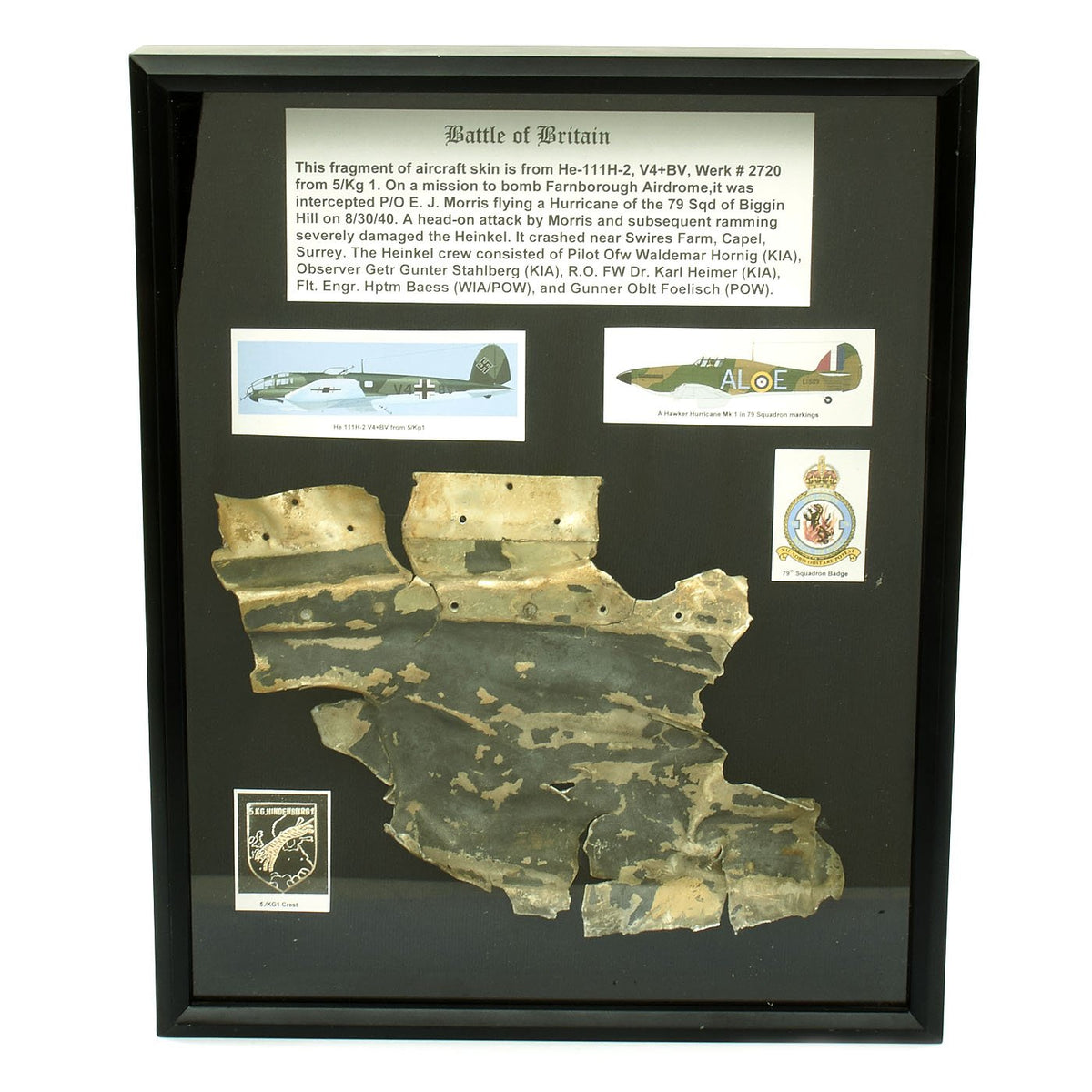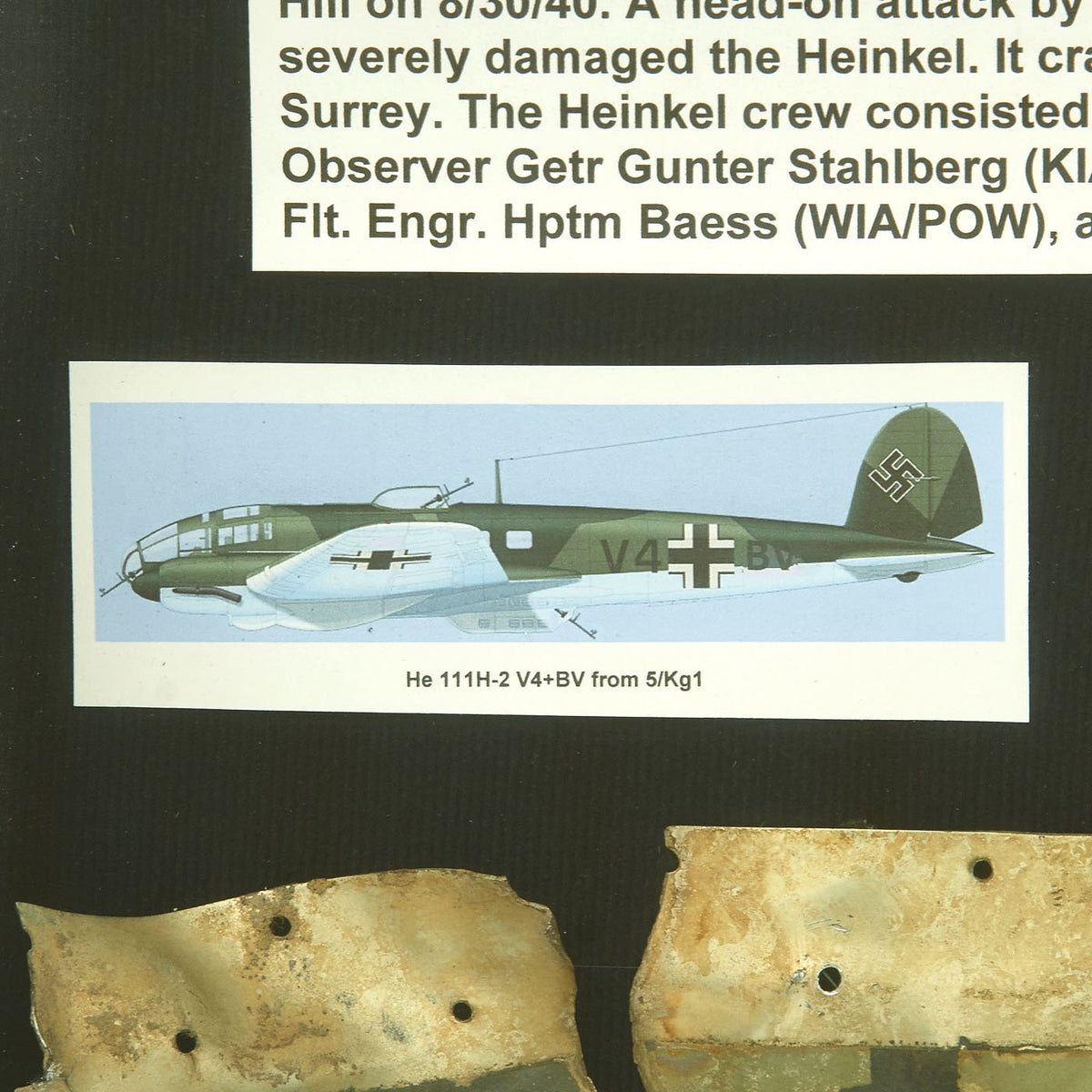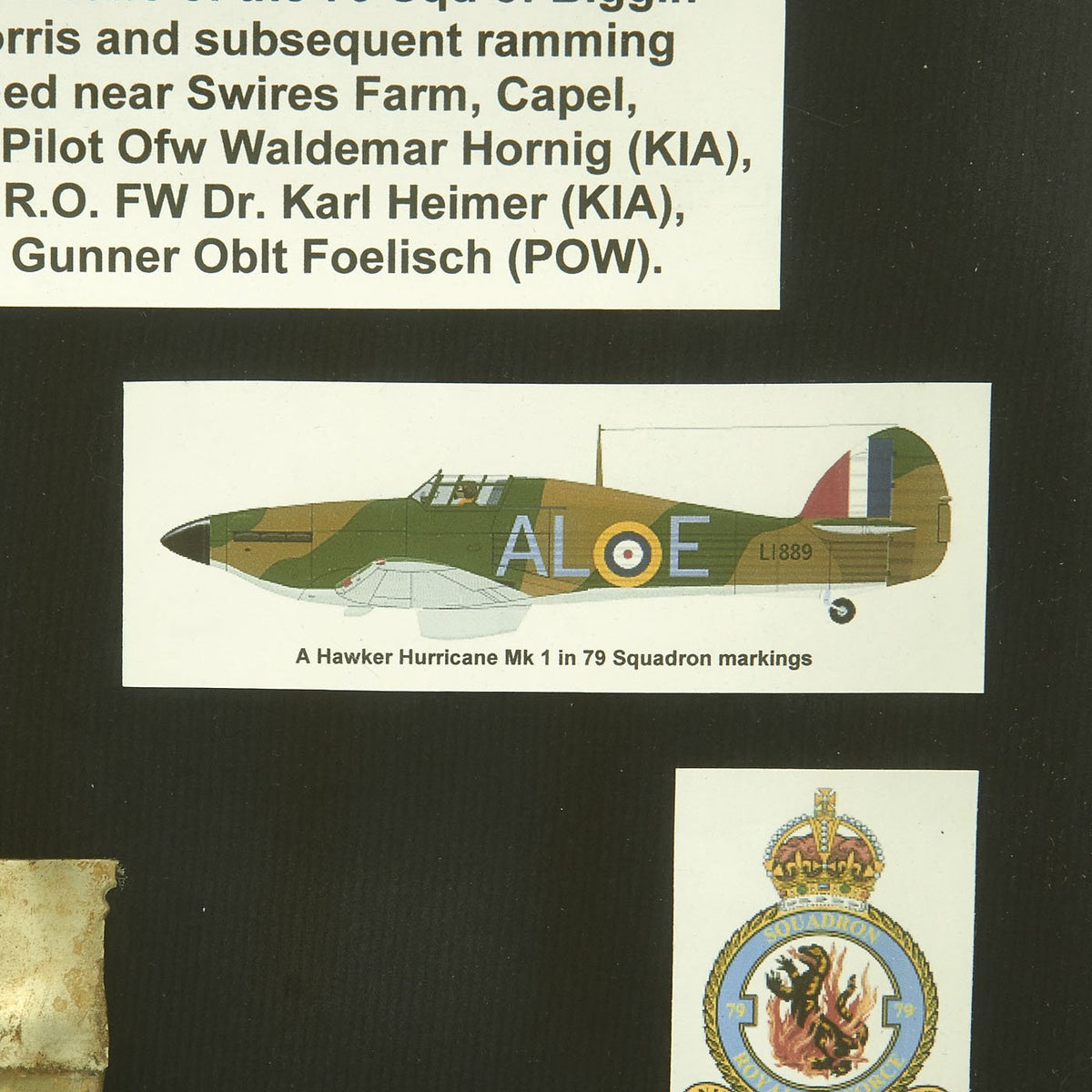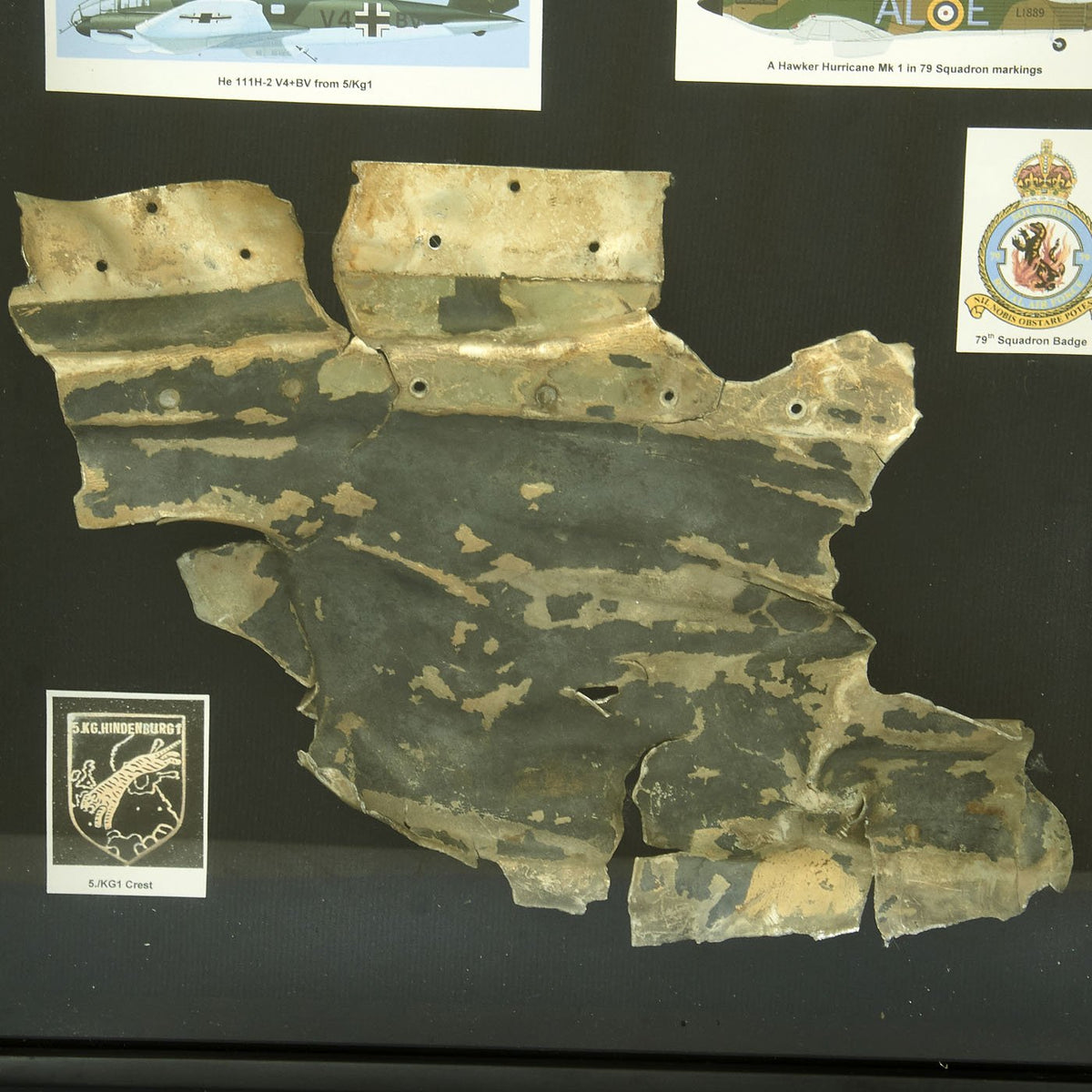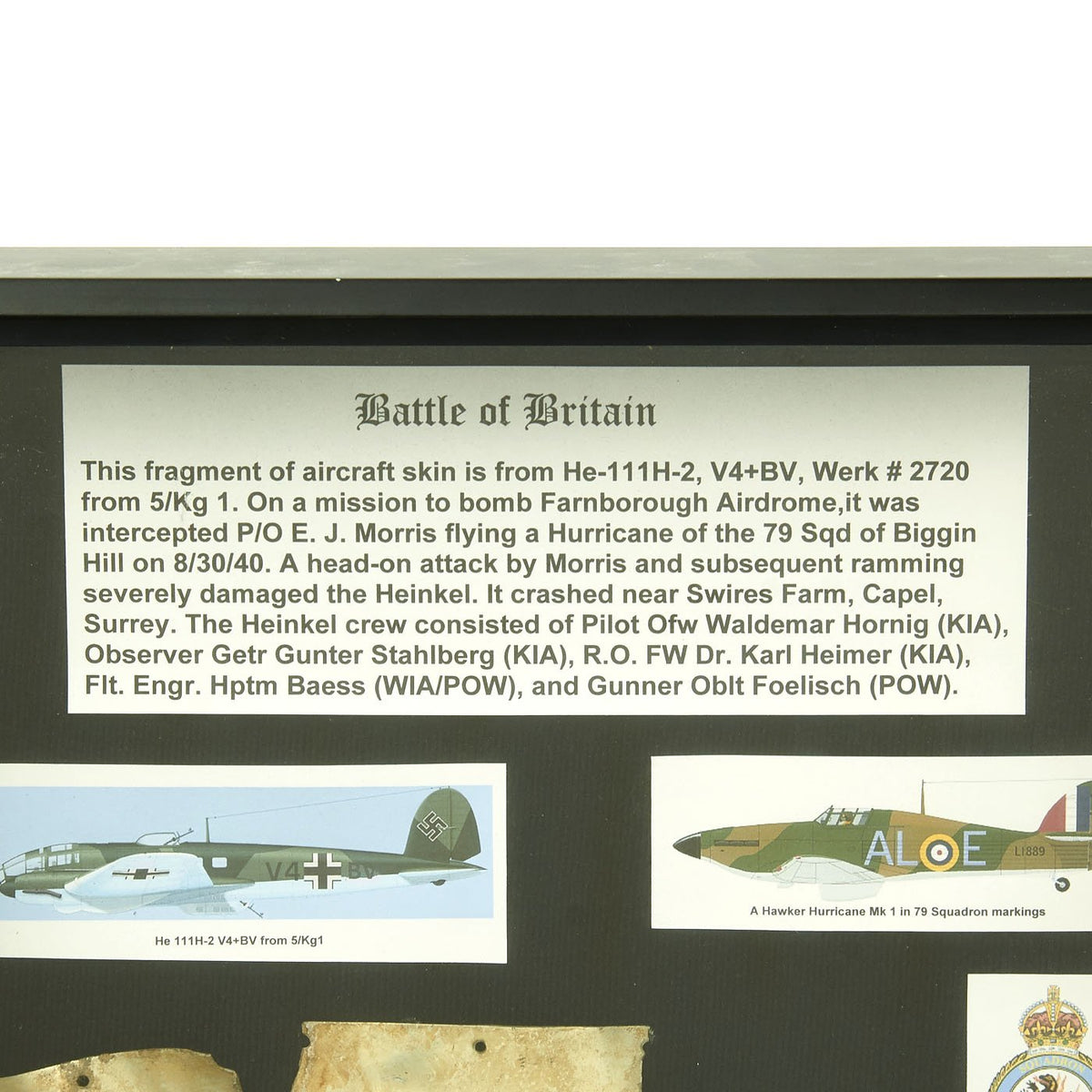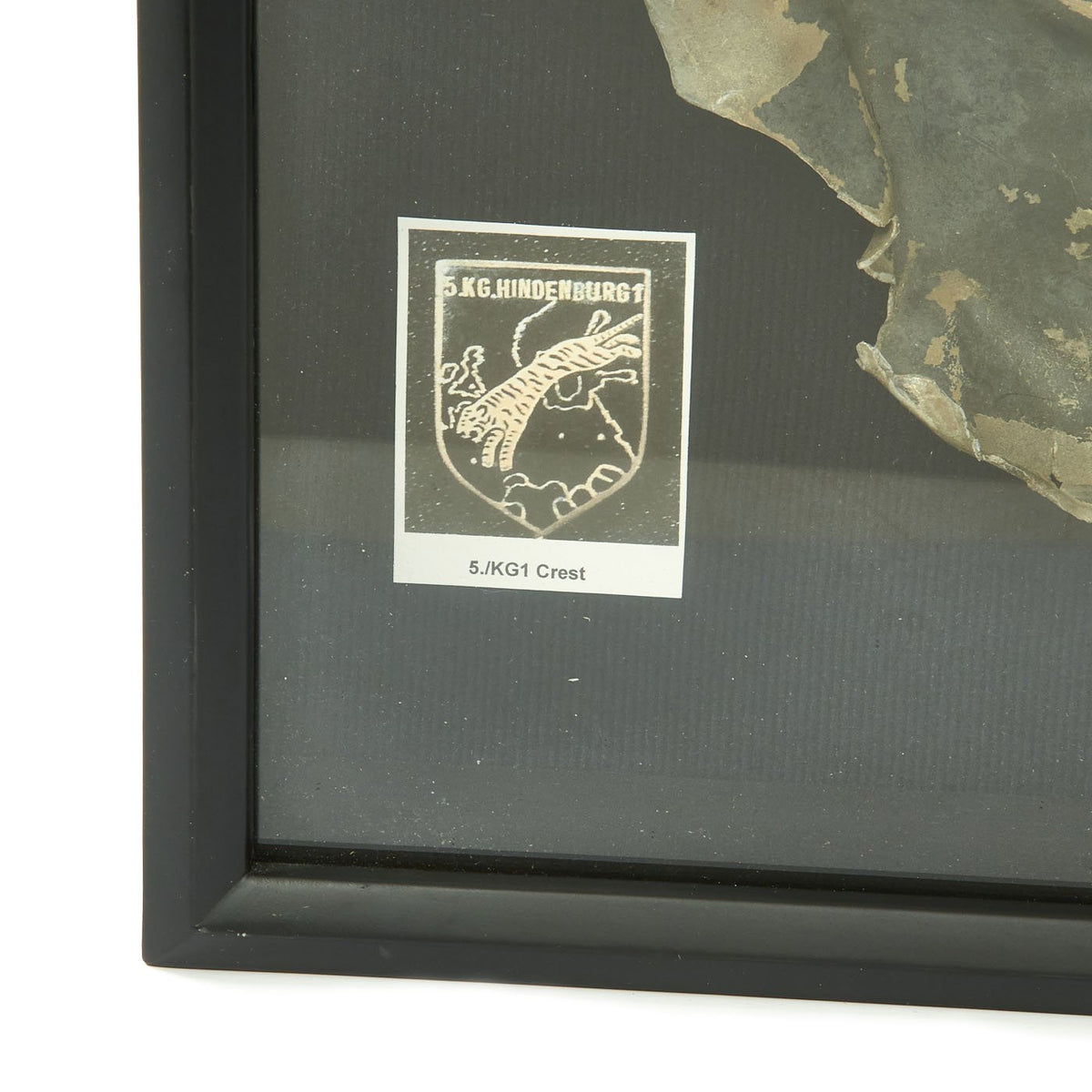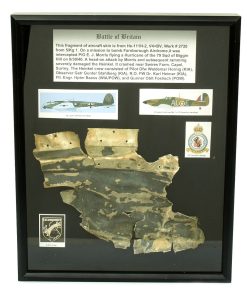Original German WWII Luftwaffe Fuselage Piece from R.A.F. Downed He 111 – Battle of Britain Original Items
$ 225,00 $ 90,00
Original Item: One of a Kind. This is a fantastic piece of WWII History! The “Battle of Britain” was the period from July 1940 to June 1941 when Germany launched repeated air attacks against Britain. It was basically the Luftwaffe versus the Royal Air Force, with the goal of both destroying Britain’s manufacturing capability, as well as their morale during the later attacks of “The Blitz”.
This is a very nice framed fragment of a downed Heinkel He-111 Bomber, with a full description of the history:
This fragment of aircraft skin is from He-111H-2, V4+BV, Werk # 2720 from 5/Kg 1. On a mission to bomb Farnborough Airdrome, it was intercepted P/O E. J. Morris flying a Hurricane of the 79 Sqd of Biggin Hill on 8/30/40. A head-on attack by Morris and subsequent ramming severely damaged the Heinkel. It crashed near Swires Farm, Capel, Surrey. The Heinkel Crew consisted of Pilot Ofw. Waldemar Hornig (KIA), Observer Getr. Gunter Stahlberg (KIA), R.O. FW Dr. Karl Heimer (KIA), Flt. Engr. Hptm. Baess (WIA/POW), and Gunner Oblt. Foelish (POW).
Under this statement are printouts of the He-111 and Hawker Hurricane, as well as printouts of the insignia of the 5./KG1 and 79th Squdron’s insignia. The central item however is definitely the large fuselage piece from the downed He-111, which measures about 13 1/2″ wide and 10″ tall. It clearly shows rivet holes and the original blue paint.
This is all contained in a glass glazed metal frame measuring 21″ x 17″ x 2 1/2″, which is in great shape. Included is a printout regarding the Battle of Britain courtesy of the Battle of Britain Research Society, as well as printouts from the original ebay auction where the fuselage piece was puchased. There is also a CD-R with further information on it.
A great piece of history from the Battle of Britain. Ready to display!
More on the HE 111:
The Heinkel He 111 was designed by Siegfried and Walter Günter for dual roles, as a high-speed transport and as a bomber for the still-secret Luftwaffe. In one form or another, the He 111’s service career extended more than thirty years, an outstanding tribute to the design, evolved by the Günter brothers.
Design work began early in 1934, the machine owing much to the single-engined Heinkel He 70 which had captured several international records. The Heinkel He 111 was considerably larger than the He 70, but retained much of that aircraft’s beauty of line. Of the original four prototypes, the first was flown on 24 February 1935, and the second and fourth were completed ostensibly as civilian transports. Bomber production was heralded in the summer of 1935 by the He 111V4 and a pre-series batch of He 111A-0s, but their BMW engines provided insufficient power, and the first major type was the He 111B, with DB 600-series engines.
Anxious to test the aircraft under operational conditions, the Luftwaffe sent a batch of thirty Heinkel He 111B-1s to Kampfgruppe 88 in Spain in February 1937. Forming the bomber component of the Condor Legion, K/88 undertook its first operational sortie on 9 March when it bombed the Republican airfields at Alcala and Madrid-Barajas.
On 10 May, 1940, German forces invaded France and the Low Countries. Operations against the Netherlands began with an attack by the He 111s from KG 4 on Amsterdam and Rotterdam Airports and Ypenburg airfield. Following the Dutch refusal to surrender Rotterdam on 14 May, one hundred Heinkel He 111Ps from Kg 54, under Oberst Lackner, took-off from Delmenhost, Hoya-Wester and Quakenbrück to bomb the city. German sources have subsequently stated that an attempt was made to recall the aircraft, but 97 tons of bombs were in fact dropped on Rotterdam.
Before the beginning of the Battle of Britain the Heinkel He 111H had almost entirely replaced the He 111P series (although most staff crews still flew the older aircraft, and it was in a He 111P that Oberst Alois Stoeckl, commanding KG 55, was shot down and killed near Middle Wallop on 14 August 1940). From the outset the He 111H, with its 435 km/h (270 mph) top speed, proved a difficult aircraft to shoot down (compared with the Dornier Do 17), and showed itself capable of weathering heavy battle damage.
By the time the Stalingrad campaign ended on 2 February, 1943, the units of Lufttransportführer 1 (joined on 1 January by III./KG 55) had lost no less than one hundred and sixty-five Heinkel He 111s, more than half the aircraft committed. The Kampfgeschwader were never to recover from this blow.
Total Heinkel He 111 production was about 7,000.
Fast Shipping with Professional Packaging
Thanks to our longstanding association with UPS FedEx DHL, and other major international carriers, we are able to provide a range of shipping options. Our warehouse staff is expertly trained and will wrap your products according to our exact and precise specifications. Prior to shipping, your goods will be thoroughly examined and securely secured. We ship to thousands clients each day across multiple countries. This shows how we're dedicated to be the largest retailer on the internet. Warehouses and distribution centres can be located throughout Europe as well as the USA.
Note: Orders with more than one item will be assigned a processing date depending on the item.
Before shipping before shipping, we'll conduct a thorough inspection of the items you have ordered. Today, the majority of orders will be delivered within 48 hours. The delivery time will be between 3-7 days.
Returns
The stock is dynamic and we cannot completely manage it because multiple stakeholders are involved, including our factory and warehouse. So the actual stock may alter at any time. It's possible that you may not receive your order once the order has been made.
Our policy is valid for a period of 30 days. If you don't receive the product within 30 days, we are not able to issue a refund or an exchange.
You can only return an item if it is unused and in the same state as the day you received it. You must have the item in its original packaging.
Related products
Uncategorized
Armored Burgonet Helmet & Polearm from Scottish Castle Leith Hall Circa 1700 Original Items
Uncategorized
Uncategorized
Uncategorized
Uncategorized
Uncategorized
Uncategorized
Uncategorized
Uncategorized
Australian WWII Owen MK1 Machine Carbine SMG Custom Fabricated Replica with Sling Original Items
Uncategorized
Uncategorized
Uncategorized
Uncategorized
Uncategorized
Uncategorized
Uncategorized
Uncategorized
Uncategorized
Uncategorized
Uncategorized
